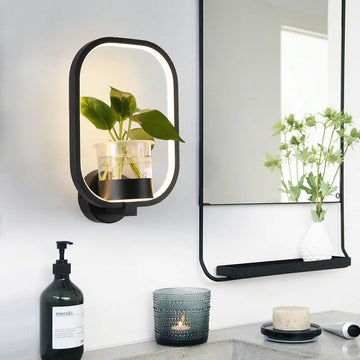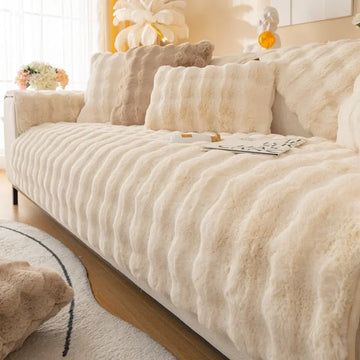
Introduction
When it comes to home décor, lighting plays a crucial role in setting the atmosphere, highlighting architectural features, and adding personality to the space. Among the various types of lighting, decorative wall lamps have gained significant popularity. These lamps not only serve as functional light sources but also as striking design elements that enhance the look of any room.
In this blog post, we will dive deep into the world of decorative wall lamps. From understanding their different styles to choosing the perfect lamp for your space, we’ll cover everything you need to know to integrate these lamps into your home. Whether you're looking for an elegant sconce to complement your living room or a quirky design for your hallway, this guide will help you make an informed decision.
1. Understanding Decorative Wall Lamps
What Are Decorative Wall Lamps?
Decorative wall lamps are lighting fixtures mounted directly on the wall, designed not only to provide illumination but also to add an aesthetic touch to a room. These lamps come in various designs, from sleek, modern styles to vintage and artistic interpretations. Typically, they are used to complement other light sources, such as ceiling lights or table lamps, by providing targeted or ambient light.
How They Differ from Regular Wall Lighting
While regular wall lighting might focus purely on functionality, decorative wall lamps are specifically chosen for their artistic and stylistic appeal. Decorative wall lamps offer a blend of beauty and utility. Unlike traditional lighting, they can serve as statement pieces or focal points in a room, often designed to match the overall theme of the space.
Materials and Styles Available
Decorative wall lamps come in a wide range of materials and styles. Common materials include metal, glass, wood, and fabric. The design can range from industrial chic, with exposed bulbs and metal frames, to luxurious designs featuring crystal chandeliers.
- Metal: Offers durability and can be finished in various styles, such as matte, brushed, or polished.
- Glass: Often used for more elegant designs, providing a soft and diffused light.
- Wood: Great for rustic or natural-themed spaces.
- Fabric: Typically used for softer, more diffused lighting effects, often seen in vintage or modern settings.
Advantages of Decorative Wall Lamps
- Space-Saving: Ideal for smaller rooms where floor space is limited.
- Ambient Lighting: Provides a cozy, inviting atmosphere.
- Stylish: Adds a unique design element to the room.
- Variety: Available in many styles, colors, and designs to suit different tastes.
2. The Impact of Decorative Wall Lamps on Interior Design
Enhancing Aesthetic Appeal
One of the main reasons people invest in decorative wall lamps is their ability to elevate a room’s aesthetic. These lamps can transform an otherwise ordinary space into something visually captivating. Whether you opt for sleek modern sconces or ornate vintage lamps, these fixtures have the power to serve as a piece of art in their own right.
- Example: A simple wall lamp in the hallway can give the room a cozy, welcoming feel.
Setting the Mood and Ambiance
Lighting affects mood and atmosphere in ways that few other design elements can. A well-placed decorative wall lamp can instantly alter the vibe of a room, whether it’s calming and relaxing or vibrant and energizing. With various types of bulbs, including dimmable LEDs, you can adjust the light to suit the time of day or occasion.
- Example: In the bedroom, a soft, warm wall sconce near the bed can create a peaceful ambiance ideal for winding down.
Functionality Meets Beauty
While decorative wall lamps are often selected for their beauty, they don't sacrifice functionality. Many are designed to serve dual purposes, offering both practical lighting and aesthetic appeal. For example, reading lamps mounted on the wall are ideal for focused light, while wall-mounted chandeliers provide an elegant overall glow.
- Example: A wall-mounted reading light beside a sofa can help focus light exactly where it's needed without occupying table space.
How Decorative Wall Lamps Complement Other Décor
When placed strategically, decorative wall lamps work harmoniously with other décor items, such as art pieces, mirrors, or furniture. By complementing your existing design elements, they can complete the look of a room.
- Example: A vintage wall sconce could beautifully frame a piece of antique artwork on the wall.
3. Choosing the Right Decorative Wall Lamp for Your Space
Consider the Room's Functionality
Before choosing a decorative wall lamp, consider the purpose of the room and the type of lighting required. A wall lamp used in a living room may need to provide ambient lighting, while in a reading nook, it should offer focused, direct light.
- Example: For a bedroom, a softer light source will be ideal, while for a home office, a brighter, task-oriented light would be more suitable.
Matching Wall Lamps with Color Scheme
The color of the lamp can significantly impact the overall aesthetic of the room. If the room features a neutral color palette, a bold lamp can add contrast and draw attention. For colorful rooms, opt for lamps in complementary hues.
- Example: A gold-tone wall sconce can add sophistication to a neutral-colored living room.
Different Types of Wall Lamps (Sconces, Art Lamps, etc.)
Wall lamps come in various styles and configurations. Some of the most common types include:
- Sconces: These are the most common wall-mounted lighting fixtures. They can be used for general, accent, or task lighting.
- Art Lamps: These lamps serve both as functional lighting and as a piece of artwork.
- Swing Arm Lamps: Perfect for reading or focused lighting, as they can be adjusted to any angle.
How Size and Placement Matter
The size and placement of a wall lamp are crucial to its effectiveness. A small lamp may get lost in a large room, while an oversized lamp may overwhelm a small space. Likewise, the height and placement on the wall should be taken into account to ensure the lamp serves its purpose without being obstructive.
- Example: In a hallway, placing smaller lamps at eye level helps create a subtle, elegant effect.
4. Innovative Ways to Use Decorative Wall Lamps in Different Rooms
Living Room
In the living room, decorative wall lamps can help create a relaxed yet stylish environment. Consider placing them above or beside the sofa to offer soft, ambient lighting, or use them as accent pieces to highlight artwork or architectural features.
- Example: Pairing a pair of elegant sconces with a statement mirror on the wall can create a stunning focal point.
Bedroom
In the bedroom, wall lamps can be used to add a cozy, intimate atmosphere. Wall-mounted lamps next to the bed are great for reading, while a chandelier can create an air of luxury.
- Example: Installing adjustable reading lights on either side of the bed can create a cozy, functional setup.
Dining Room
In the dining room, wall lamps can be used to add warmth to the space and highlight the dining table. They can be mounted on the walls or paired with other lighting fixtures for a balanced look.
- Example: A pair of vintage sconces can complement a rustic dining table and add elegance to the room.
Hallways and Corridors
Hallways and corridors are often overlooked in terms of lighting, but decorative wall lamps can add warmth and charm

